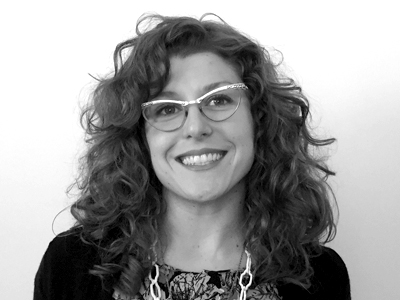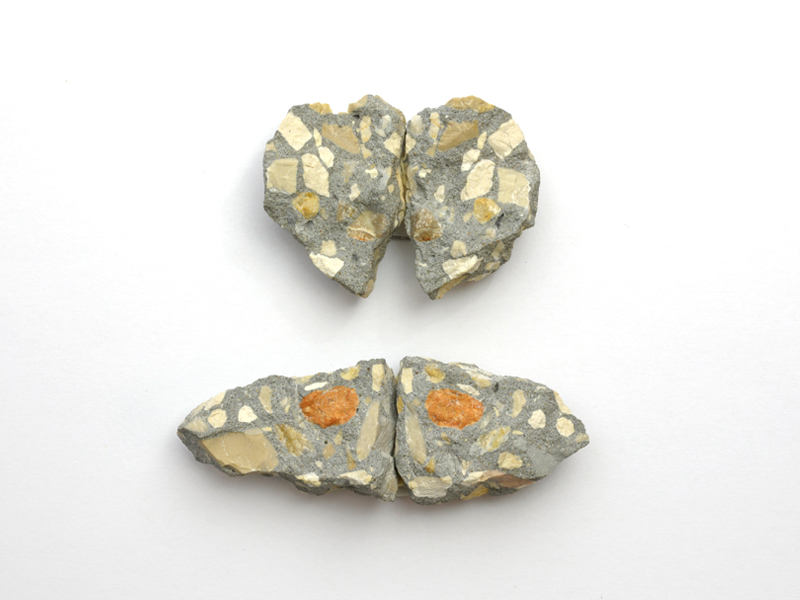
Vered Kaminski is perhaps the most recognized and influential Israeli jewelry artist. She has a decades-long career as an educator. Her jewelry is internationally renowned, and she is the recipient of numerous awards—including her recent acclaim as recipient of the 2015 Andy Prize. This interview with Kaminski demonstrates her humble factuality regarding the inspirations and influences for Sand in a Bottle, currently on view at Gallery Loupe.
Adriane Dalton: You attended the Bezalel Academy of Arts and Design in Jerusalem, the University of Paris, and the Rietveld Academie in Amsterdam. What initially drew you to studying jewelry, and what compelled you to continue with the medium?
Vered Kaminski: This kind of craft suited my abilities and I enjoyed working in this medium. I continue because, in addition to what drew me to it originally, I became interested in the reasons why people use jewelry, spanning from the beginning of history until today.
You are the 2015 recipient of the prestigious Andy Prize, which includes an exhibition at the Tel Aviv Museum of Art. Can you talk about this recognition and what it means for you at this stage in your career?
Vered Kaminski: The exhibition at the Tel Aviv Museum was a good opportunity to show a large part of my work in one exhibition and have it documented in the accompanying catalogue, as well as exposing it to a broader Israeli audience than usual.
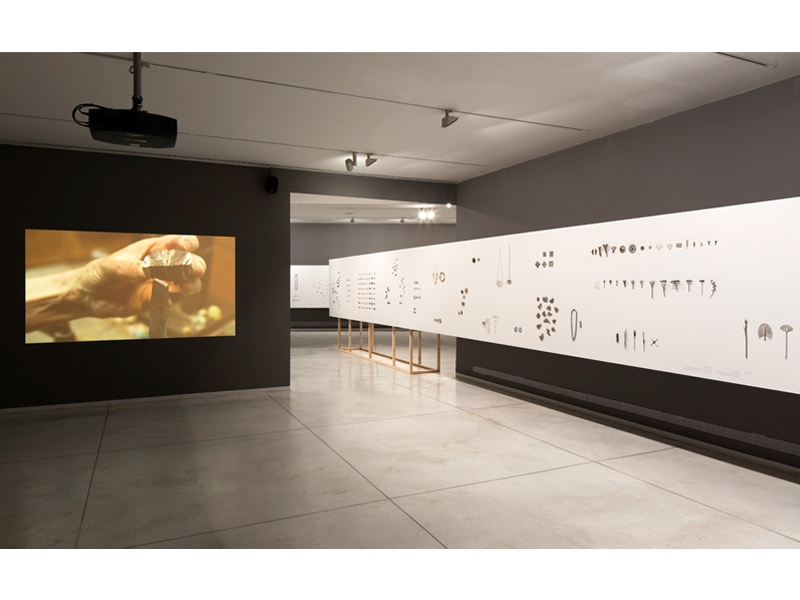
The Tel Aviv exhibition featured an astonishing 850 works, presented on long billboards, a little like upright archeological digs, minus the captions. Is the idea—that this contemporary work is also embedded in ancient history—a reading you encourage?
Vered Kaminski: No. The idea was to show the works in a non-linear way, interconnecting the works in different ways and in all directions rather than just linearly. We also wanted the pieces to be displayed in front of the viewer’s eyes, as one sees jewelry when it is worn on someone’s body. It was important to show the works without text, unenclosed in display cases, and completely accessible.
Your current show at Gallery Loupe features a selection of works from the exhibition at the Tel Aviv Museum of Art along with an accompanying display of works from throughout your career. How were works selected from the larger exhibit?
Vered Kaminski: The concrete and stone works had not yet been exhibited at Gallery Loupe, but parts of the other groups had been shown there previously. Most of the concrete works are new, though some were made in 1991 and were exhibited in my solo exhibition at the Israel Museum in Jerusalem.
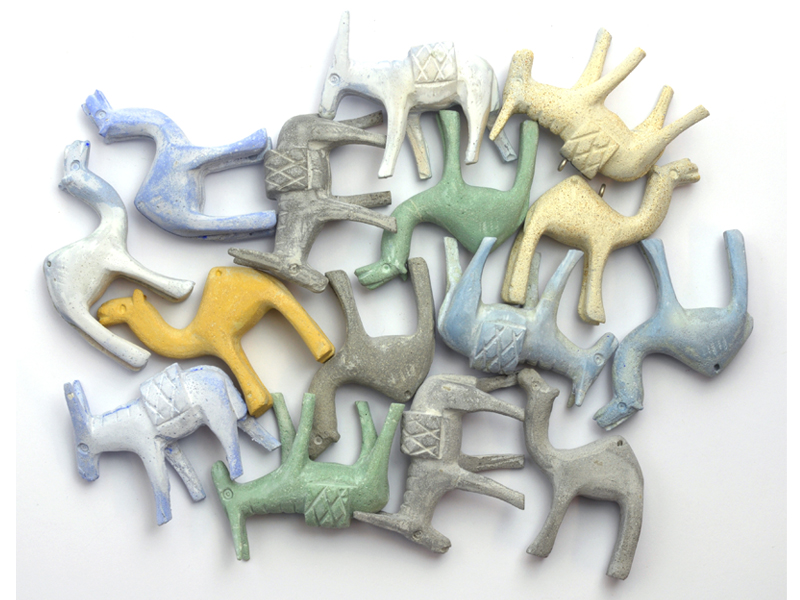
The display at Gallery Loupe is entitled Sand in a Bottle. Please elaborate on the title in regard to the selected works.
Vered Kaminski: It relates to the bottles with colored sand drawings sold by Bedouins as souvenirs from trips to the desert and which depict landscapes and oases. I tried to make them without the bottles; just natural and colored sand and cement for binding. Sand is another mineral from the earth, like stones and metals, that was used many times in the past as a material for jewelry.
You incorporate natural stones in much of your work, but your recent creations are composed with “stones” that you created from cement and sand. What compels you to make your own stones, and what is your process?
Vered Kaminski: The concrete and metal stones are a different manipulation of the raw materials, replacing the real stones with an easy-to-work-with substitute which can be cast and at the same time maintains the look and sometimes feel of stone.
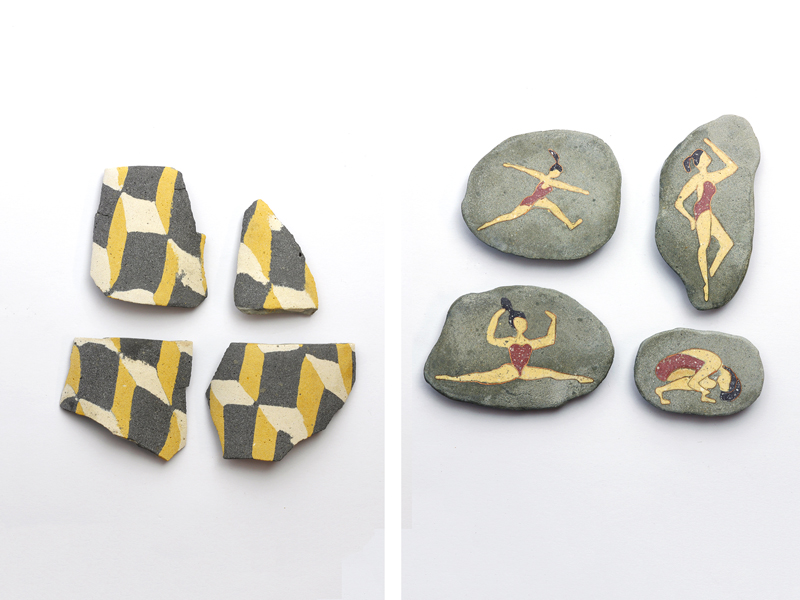
Some of your pieces are abstract or appear to be fragments from a larger whole, such as the brooches with the yellow and gray rhomboid pattern. Others are shaped like animals or have illustrations of figures or flowers. What are the origins of these figurative images?
Vered Kaminski: The fragments are from bracelets, which broke and were rescued to become brooches. The images are reflections of my surroundings and imagination, more or less.
The figure of the female dancer or gymnast has some of the playfulness of your Soap Bubbles, but it is quite hard to place her, or what she is doing, in the context of your muted stone and wire adventures. Can you tell us who or what she is?
Vered Kaminski: This is what I would like to see in the mirror.
I’m curious about your necklaces and brooches made up of concentric circles. Is this a reference to evil eye motifs? What is the story behind these works?
Vered Kaminski: Yes, they are based on the reasons why we wear jewelry. One of the reasons is to protect our bodies or ourselves. The eye means that someone is watching over us.

The concrete pieces are somewhat of an aesthetic departure from the undulating wire loops and branch-like sprays of some of your previous works. The former seemed to have a lot to do with networks and arborescences, as represented by meshes, undulating lines, or near-fractal structures. The recent work is more concerned with a sort of fictitious archeology. Where do you see your work going?
Vered Kaminski: I really don’t know where my work is going. I follow my own lead but there is no master plan. Most of my works were made of different stones and metals. I don’t see the new “concrete” works as a departure. Concrete, for me, is artificial stone. Some of my works are constructed, some are cast, and some look like pieces of a bigger work broken into fragments. I use this method for metal works, too. It is conscious.

Do you have any other shows or projects in the works?
Vered Kaminski: I currently have another exhibition in Legnica, Poland. I don’t have any future exhibitions slated at the moment. In the meantime, I will continue working in my studio and teaching at Bezalel.
Who are the artists, authors, composers, or cultural figures who inspire you, and why?
Vered Kaminski: There are too many to note, including students or people walking down my street.
What advice do you have for early career art jewelers?
Vered Kaminski: I think the motivation of the jewelry maker must be like that of any other art maker; they must have complete control over the process and should follow their curiosity, instincts, and beliefs. They should hear the voices of others but essentially remaining tuned in to their own inner voice.

The works in this show range in price from US$1000 to $3800
